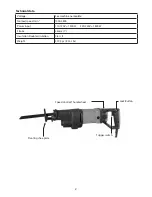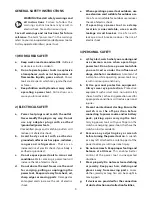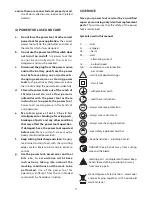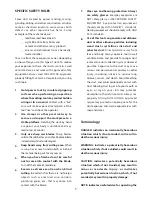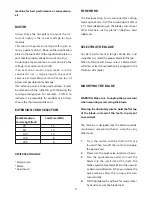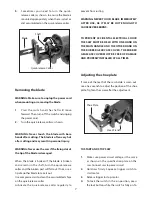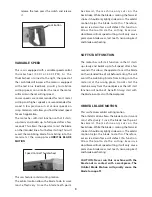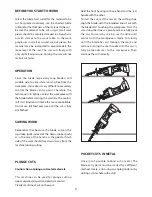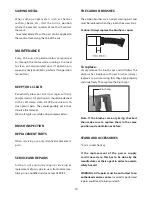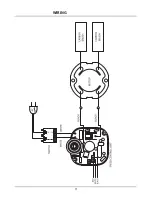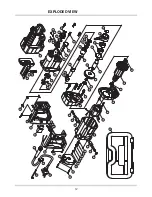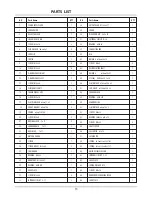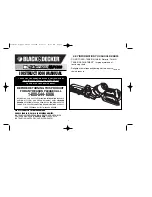
5
SPECIFIC SAFETY RULES
Some dust created by power sanding, sawing,
grinding, drilling, and other construction activities
contains chemicals known to cause cancer, birth
defects or other reproductive harm. Some
examples of these chemicals are:
•
lead from lead-based paints
•
crystalline silica from bricks and
cement and other masonry products
•
arsenic and chromium from chemically-
treated lumber
Your risk from these exposures varies, depending
on how often you do this type of work. To reduce
your exposure to these chemicals: work in a well
ventilated area, and work with approved safety
equipment, always wear NIOSH/OSHA approved,
properly fitting face mask or respirator when using
such tools.
1. Hold power tool by insulated gripping
surfaces when performing an operation
where the cutting tool may contact hidden
wiring or its own cord.
Contact with a "live"
wire will make exposed metal parts of the
tool "live" and shock the operator.
2. Use clamps or other practical way to
secure and support the workpiece to a
stable platform.
Holding the work by hand
or against your body is unstable and may
lead to loss of control.
3. Only use sharp saw blades.
Sharp blades
will do the job better and safer. Replace blade
immediately if dull or damaged.
4. Keep hands away from cutting area.
When
sawing never reach underneath or behind
the material being cut for any reason.
5. When you have finished a cut be careful
not to come into contact with the blade.
Turn off the motor immediately.
6. Exercise extreme caution when blind
cutting.
Be certain that there are no foreign
objects such as electrical wire, conduit,
plumbing pipes, etc., that may come into
contact with the blade.
7. Wear eye and hearing protection. Always
use safety glasses.
Everyday eyeglasses are
NOT safety glasses. USE CERTIFIED SAFETY
EQUIPMENT. Eye protection equipment
should comply with ANSI Z87.1 standards.
Hearing equipment should comply with ANSI
S3.19 standards.
8. Use of this tool can generate and disburse
dust or other airborne particles, including
wood dust, crystalline silica dust and
asbestos dust.
Direct particles away from
face and body. Always operate tool in well
ventilated area and provide for proper dust
removal.Use dust collection system wherever
possible. Exposure to the dust may cause
serious and permanent respiratory or other
injury, including silicosis (a serious lung
disease), cancer, and death. Avoid breathing
the dust, and avoid prolonged contact with
dust. Allowing dust to get into your mouth or
eyes, or lay on your skin may promote
absorption of harmful material. Always use
properly fitting NIOSH/OSHA approved
respiratory protection appropriate for the
dust exposure, and wash exposed areas with
soap and water.
Terminology:
DANGER: indicates an imminently hazardous
situation which, if not avoided, will result in
death or serious injury.
WARNING: indicates a potentially hazardous
situation which, if not avoided, could result in
death or serious injury.
CAUTION: indicates a potentially hazardous
situation which, if not Avoided, may result in
minor or moderate injur y. or indicates
potentially hazardous situation which, if not
avoided, may result in property damage.
NOTE: indicates useful advice for operating the


